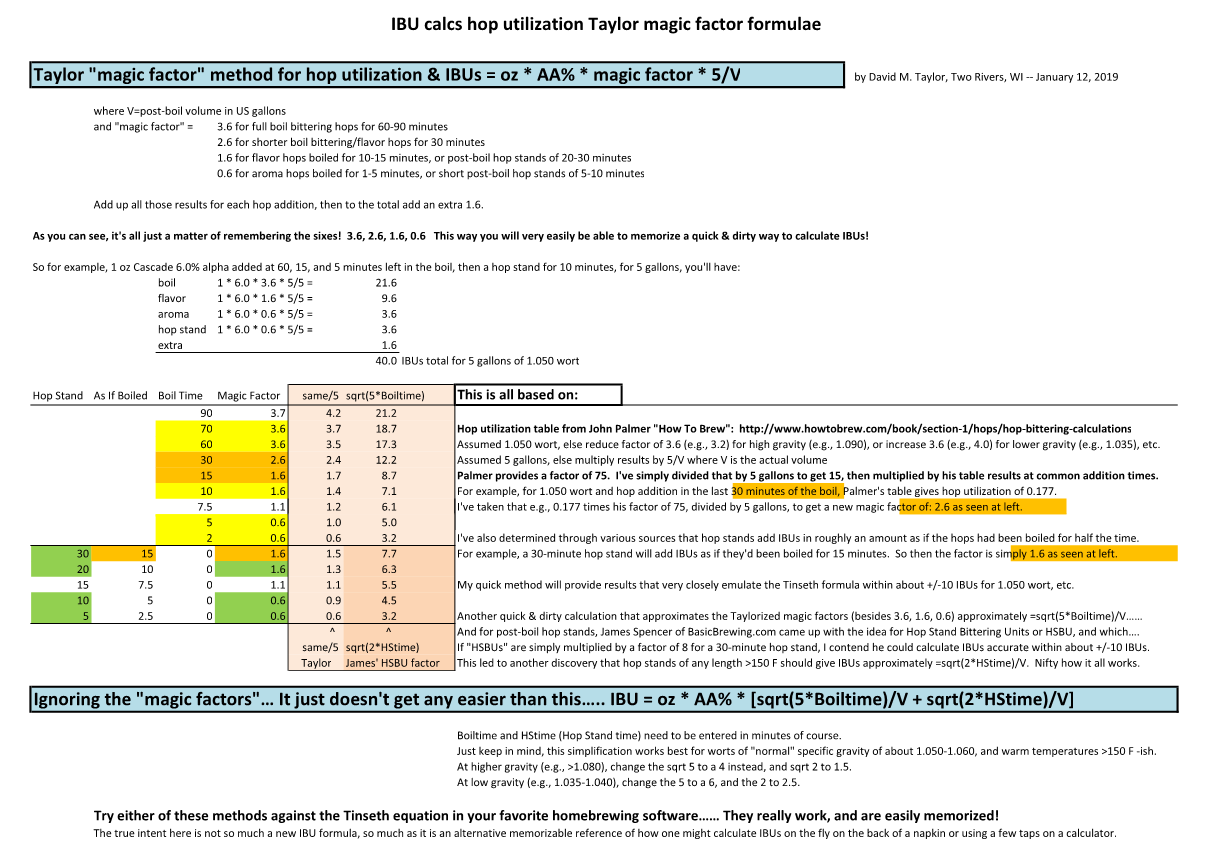snarf7
Well-Known Member
- Joined
- Apr 30, 2017
- Messages
- 379
- Reaction score
- 114
This is for an 5 gallon NEIPA brew, I haven't done one in almost 2 years but that's what the wife requested 
So I want to try doing one with no boil hops, do all my hops at flameout or thereafter as it cools with the immersion chiller.
This will be the first time i've ever omitted boil-time hops completely. I have tried hop standing/whirlpooling at around 170-180F with different degrees of success before but never all post boil
I'm going with a combo of Sabro + El Dorado for my hops, shooting for 30ish IBUs.
Can anyone recommend a schedule that has worked well for them in post boil that I could adapt? <My initial thought was to dump one charge of hops right at flameout to get my bitterness and another at 170F to get my aroma but having no experience I have no idea how much to use, how quickly to cool it down to 170F etc
much obliged gang!
So I want to try doing one with no boil hops, do all my hops at flameout or thereafter as it cools with the immersion chiller.
This will be the first time i've ever omitted boil-time hops completely. I have tried hop standing/whirlpooling at around 170-180F with different degrees of success before but never all post boil
I'm going with a combo of Sabro + El Dorado for my hops, shooting for 30ish IBUs.
Can anyone recommend a schedule that has worked well for them in post boil that I could adapt? <My initial thought was to dump one charge of hops right at flameout to get my bitterness and another at 170F to get my aroma but having no experience I have no idea how much to use, how quickly to cool it down to 170F etc
much obliged gang!



